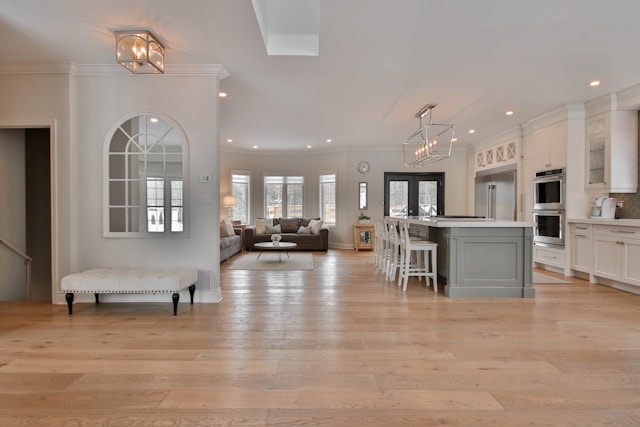How to Choose the Right Flooring for Every Room in Your Home
August 11, 2025Flooring has a bigger impact on your home than many people realize. It sets the tone for a space, affects comfort underfoot, and can even influence how easy a room is to maintain. Choosing the right flooring isn’t just about picking something that looks nice—it’s about finding a material that fits each room’s function, style, and level of activity.

Matching Flooring to Room Function
Every room in your home serves a different purpose, and the flooring should reflect that. High-traffic areas like entryways and kitchens need durable, easy-to-clean materials. Bedrooms and living rooms may benefit more from comfort and warmth.
Thinking about how you use each room will help you narrow down your options. A family with young kids and pets might prioritize scratch resistance and stain protection, while a couple in a low-traffic household could focus more on design and texture.
Hardwood: A Classic Choice
Hardwood is a timeless flooring option that works in many spaces. Its natural warmth and character make it especially popular in living rooms, dining areas, and bedrooms.
Pros:
- Long-lasting and can be refinished
- Adds value to a home
- Versatile design appeal
Considerations:
- Can scratch or dent in high-traffic areas
- Sensitive to moisture, making it less suitable for bathrooms or laundry rooms
Engineered hardwood offers similar beauty but with added stability, which can be helpful in rooms where humidity changes throughout the year.
Tile: Durable and Moisture-Resistant
Tile is one of the most durable flooring materials, making it ideal for kitchens, bathrooms, and mudrooms. Available in ceramic, porcelain, and natural stone, it’s easy to find a style that complements your home.
Pros:
- Resistant to water and stains
- Easy to clean
- Wide range of colors and textures
Considerations:
- Can feel cold or hard underfoot
- Grout requires occasional maintenance
For a warmer feel in cold climates, consider pairing tile floors with radiant heating systems.
Carpet: Comfort and Warmth
Carpet remains a popular choice for bedrooms and family rooms where comfort is a priority. It provides a soft surface for kids to play on and can help dampen noise between floors.
Pros:
- Comfortable underfoot
- Variety of colors and patterns
- Helps with sound insulation
Considerations:
- Can stain and show wear over time
- Requires regular vacuuming and professional cleaning
Low-pile carpets are generally easier to maintain than high-pile or shag styles.
Vinyl and Luxury Vinyl Plank (LVP)
Vinyl flooring has come a long way in recent years. Luxury vinyl plank (LVP) and luxury vinyl tile (LVT) offer realistic wood or stone looks with the benefits of water resistance and durability.
Pros:
- Affordable and versatile
- Moisture-resistant, making it suitable for kitchens and bathrooms
- Softer underfoot than tile
Considerations:
- Quality varies, so it’s worth investing in a reputable brand
- May not have the same resale value as hardwood
Laminate: Style on a Budget
Laminate flooring is a cost-effective alternative to hardwood, offering similar visuals without the same price tag. It’s easy to install and maintain, making it a favorite for DIYers.
Pros:
- Budget-friendly
- Scratch-resistant surface
- Wide range of design options
Considerations:
- Susceptible to water damage
- Cannot be refinished
Water-resistant laminates are available, but they’re better suited to moderate moisture areas rather than bathrooms or laundry rooms.
Blending Style and Practicality
While each material has its pros and cons, many homeowners mix and match flooring types throughout the house. For example, hardwood or LVP in the main living areas, tile in bathrooms and kitchens, and carpet in bedrooms can provide a balance of comfort, durability, and visual flow.
When making your decision, consider factors such as:
- Maintenance – How much upkeep are you willing to do?
- Longevity – Do you want something that will last decades or be replaced sooner?
- Budget – What can you comfortably invest now, and what’s the long-term value?
- Aesthetic – Does the flooring complement the style of your home?
Installation and Professional Help
While some flooring types are DIY-friendly, others require specialized tools and expertise to ensure a lasting result. Uneven subfloors, moisture barriers, and intricate patterns are just a few reasons to consider professional installation.
If you’re ready to explore your options, Royal Floors of Houston offers a wide range of flooring solutions and expert guidance to help match materials to your lifestyle and design preferences.
Additional Resources
For more in-depth information on flooring materials, care, and installation standards, the National Wood Flooring Association provides resources and guidelines for homeowners and contractors alike.
Final Thoughts
Choosing the right flooring is a blend of style, practicality, and budget. By thinking about how each room is used and what you want from the space, you can select materials that enhance your home’s comfort and function for years to come. Whether you lean toward the timeless beauty of hardwood, the resilience of tile, or the versatility of luxury vinyl, the right floor can make every step in your home feel like the perfect fit.
